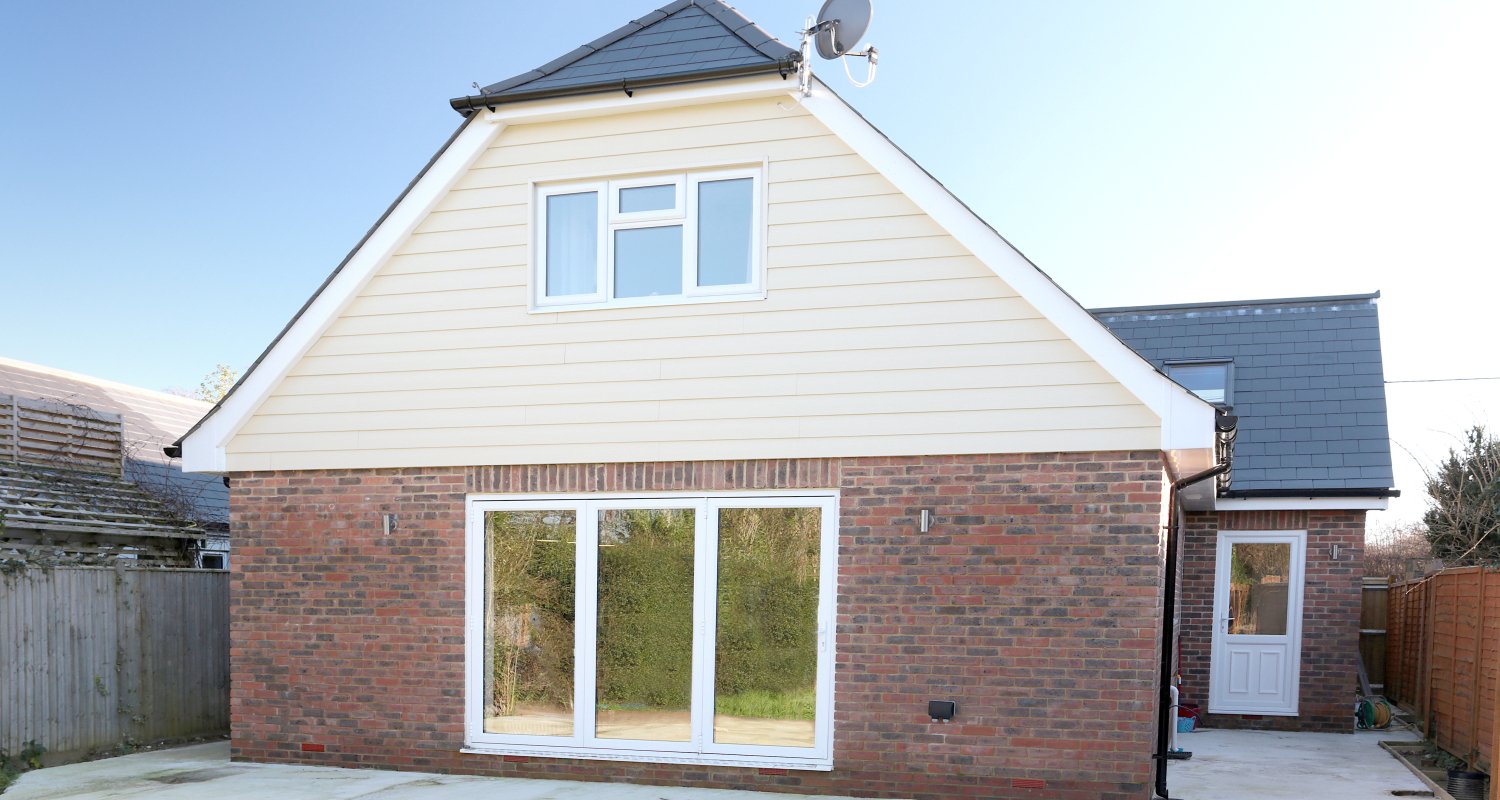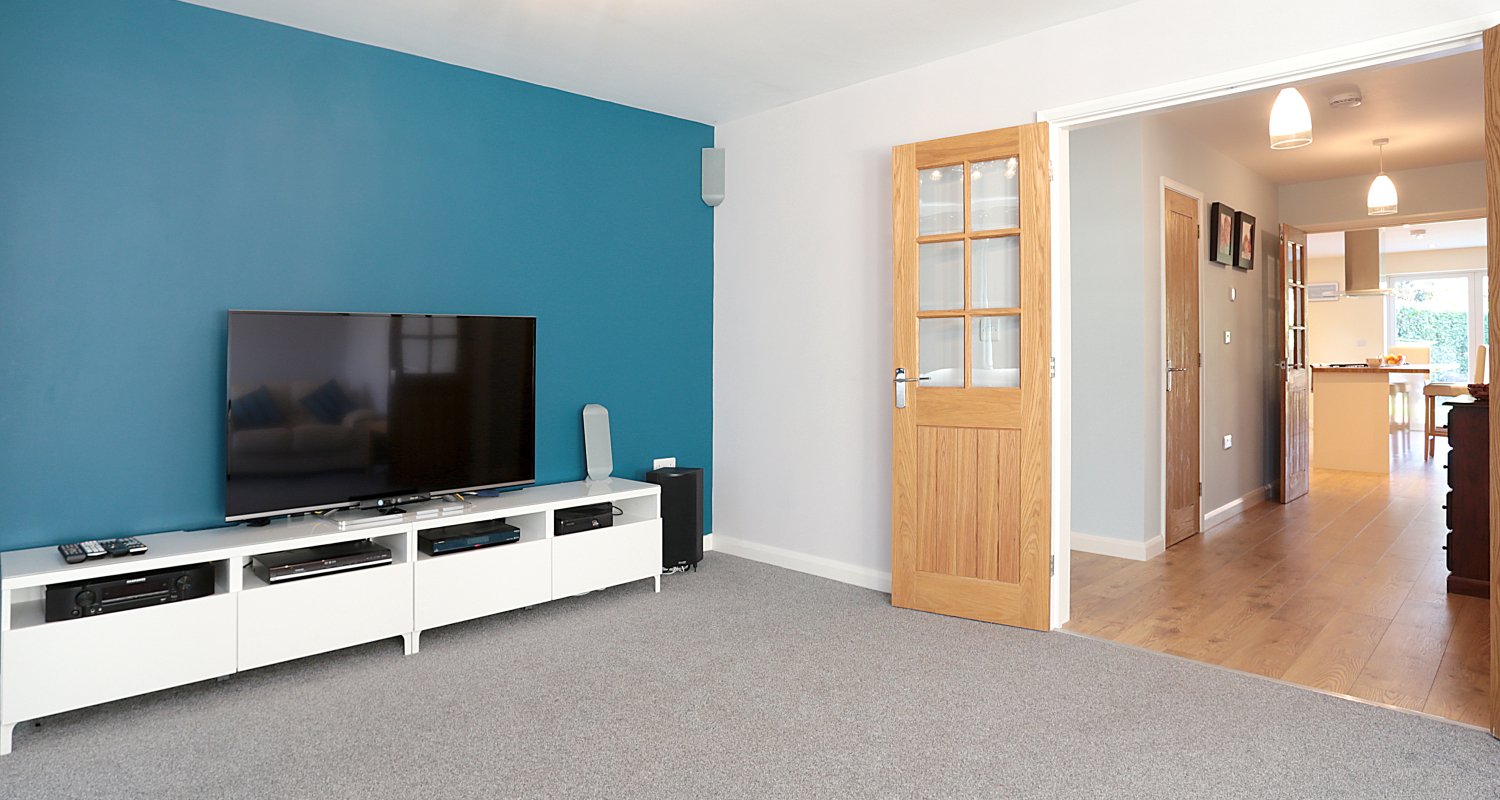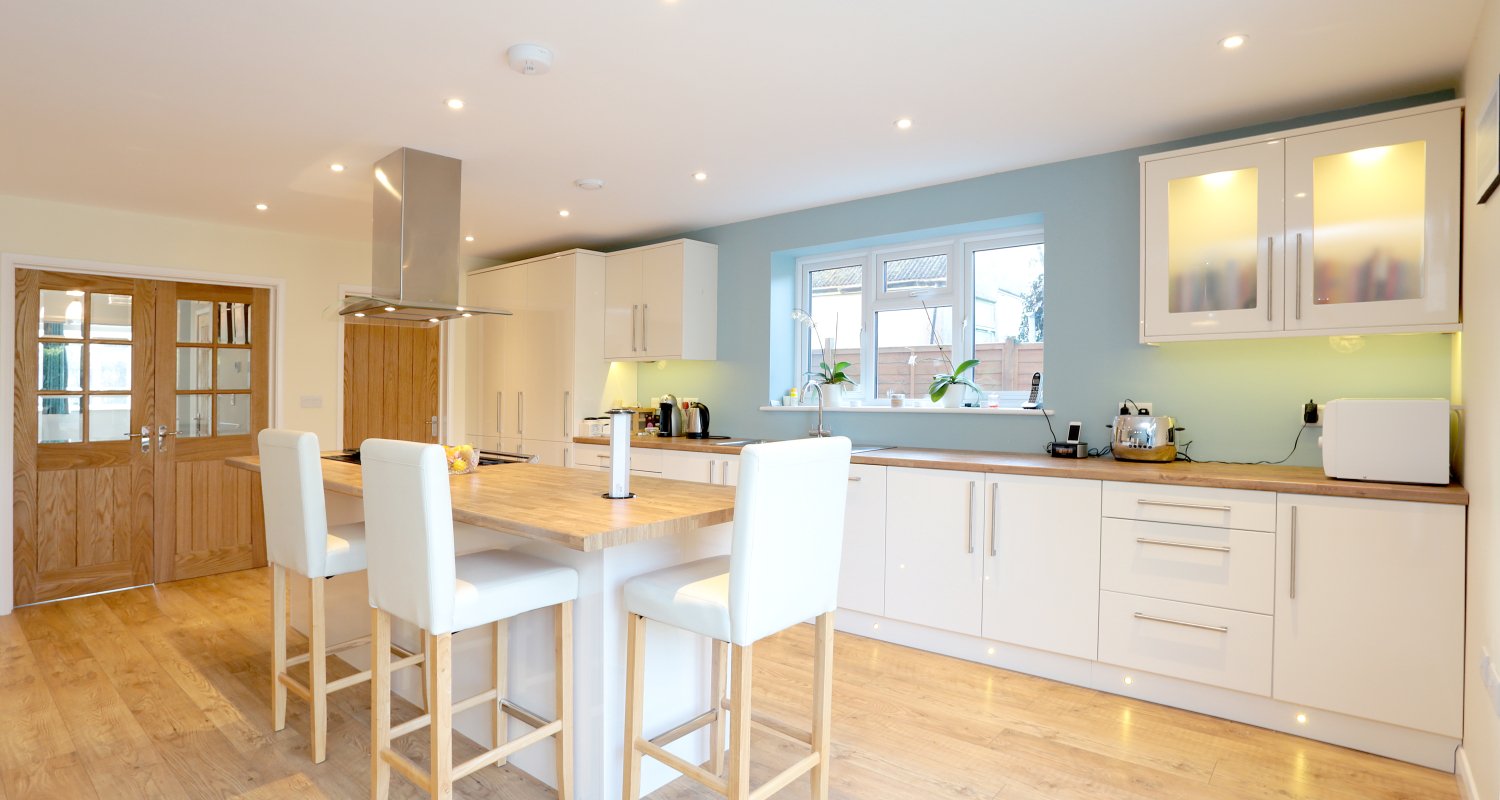Three Oaks
The owner was living in a timber framed house built in the 1930s and wanted more space to accommodate a growing family. No mortgage funding was available to extend the current home as the structure was deemed to be at the end of its useful life. The owner wasleft with no choice but to demolish the existing property and build a new home. The new home needed to sit mainly within the footplate of the was provided by adding rooms in the roof, raising the roofline some four feet. Given his experience with the original property, the owner opted for masonry construction, looking for energy efficiency as well
as an extended lifespan for the new structure.
The client opted for thin-joint construction in order to capitalise to the maximum on the energy efficiency of aircrete construction. The house was built using Passivhaus principles, with a highly airtight structure. An MVHR system provides ventilation and heat recovery for enhanced energy efficiency. The objective was to follow a fabric first principle to energy efficient design and the client stopped short of using renewable energy sources to get to a zero carbon home.
Foundations:
One course of aircrete was used below ground to reduce thermal linear bridging at the floor/wall junction.
External walls:
A cavity wall construction with the inner, load-bearing leaf constructed using 100mm standard 3.6N/mm2 Jumbo Bloks (630 x 250mm) with Celfix Mortar in a Thin-Joint System. The 150mm cavity is fully filled with Isover High-Cav 32 insulation and finished with a brick outer leaf. The resulting structure provides a U-value of 1.8W/m2K and an airtightness of 3.8 m3/h(m2 .hr)@50 Pa. This is considerably in advance of current Building Regulations (U-Value requirement 0.3W/m2K and airtightness of 8m3/(m2 .hr)@50Pa).




